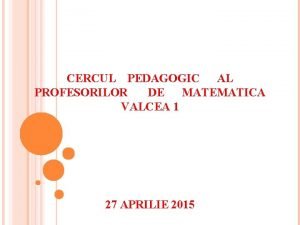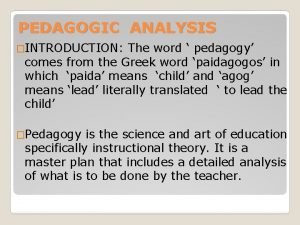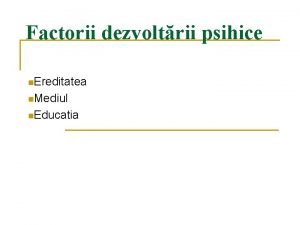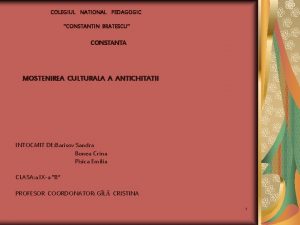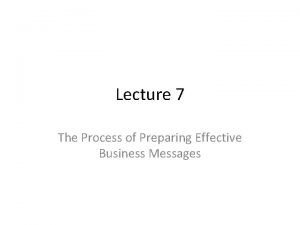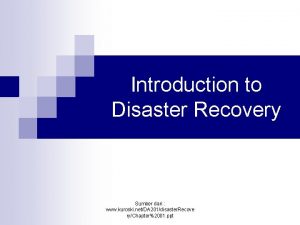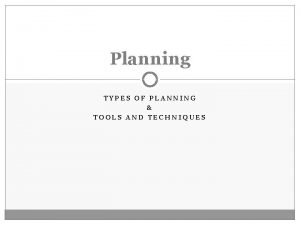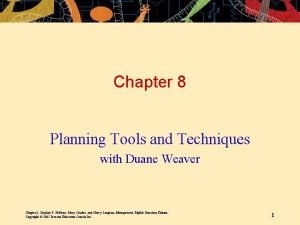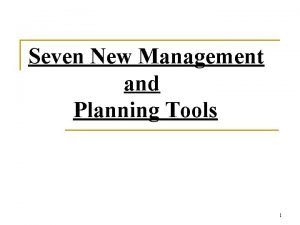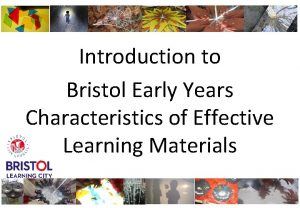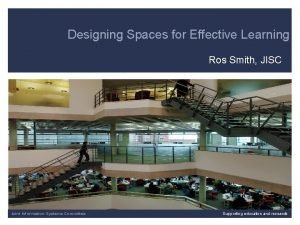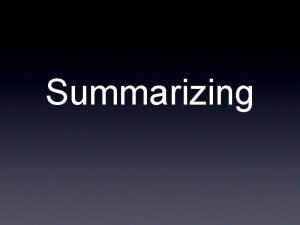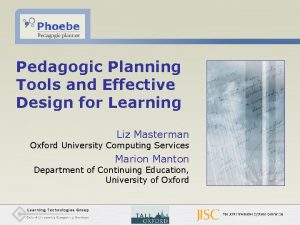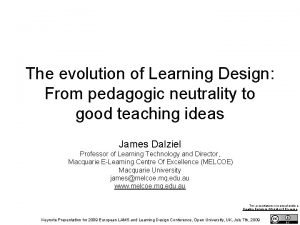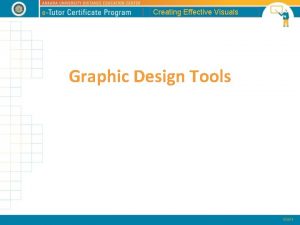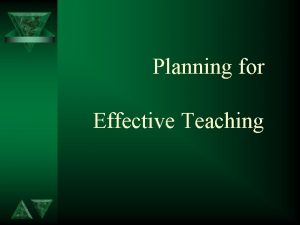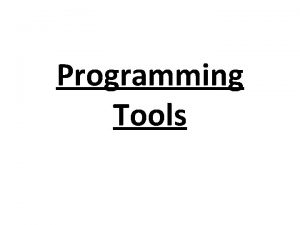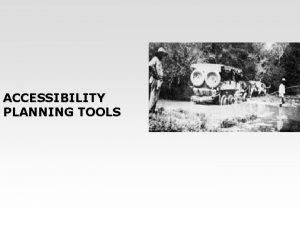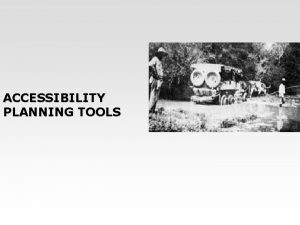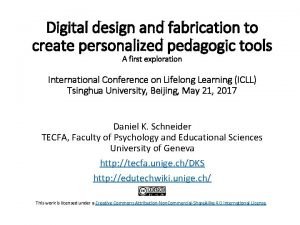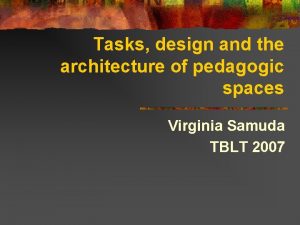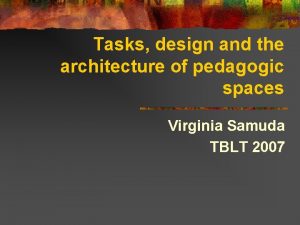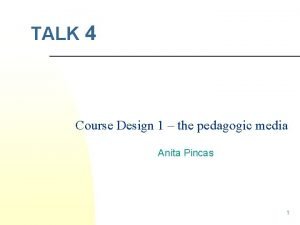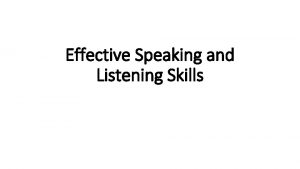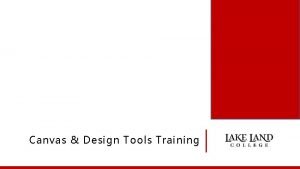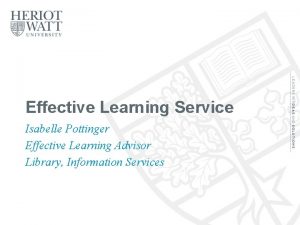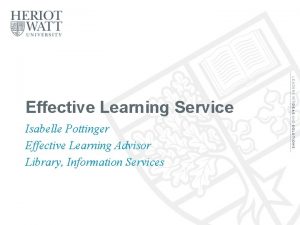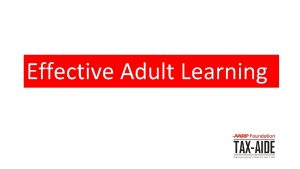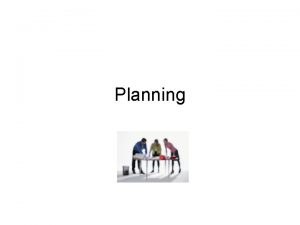Pedagogic Planning Tools and Effective Design for Learning







































- Slides: 39

Pedagogic Planning Tools and Effective Design for Learning Liz Masterman Oxford University Computing Services Marion Manton Department of Continuing Education, University of Oxford

Overview • Planning: the impact of technology • Pedagogic planning tools § The design challenge § Examples of tools § Phoebe: design rationale and quick tour • Reflections: promoting Design for Learning

Technology as a driver for (re-)planning • “E-learning is often talked about as a ‘trojan mouse, ’ which teachers let into their practice without realizing that it will require them to rethink not just how they use particular hardware or software, but all of what they do. ” (Sharpe & Oliver, 2007, p. 49) • “It fundamentally made me think about what I actually do in the class. … The VLE really made me think about ‘how am I going to project what it is that I give to a lesson when I’m face to face on this screen? ’ … Usually I don’t have to plan my lessons, I just go in and do it … What it brought me back to was the actual lesson plan, you know, like when you first started off … it was like that all over again. ” (School teacher)

Planning as a means to “scaffold” technology use • “Technology-reticent” practitioners: § § § Lack of awareness or interest “Technophobia” Lack of time to explore (esp. if part-time or hourly paid) Aversion to risk inherent in experimentation Fear of being supplanted Incompatibility with institutional model of learning • But pressure to engage with digital technology § From above • Implementation of VLE • Use of technology as a criterion in performance assessment § From below • Student expectations • How to engage the technology-reticent? § Institutional staff-development initiatives… § …mediated by pedagogic planning tools

Enter the pedagogic planning tool… = Where the individual practitioner starts getting to grips with technology and exploring its implications • An emergent genre: § JISC Design for Learning programme (2 projects), Dialog. Plus, Re. Math, LAMS § Guide teachers through the construction of plans for learning sessions that make appropriate, and effective, use of technology • Pedagogic planning: § Concept of “lesson” alien to HE § Pedagogy “embraces an essential dialogue between teaching and learning” (Beetham & Sharpe, 2007, p. 2)

The design challenge: Range of approaches • “The starting point would be the assessment criteria/expected learning outcomes. This would be balanced by the students’ needs and level of learning. I would also take into account the type of students […] The environment can affect what can be done in a session e. g. availability of breakout rooms, space for group work etc. Time of day can be important. […] Available resources would also be considered. ” • “I often go out for a run to clear my head to let the creative juices start to flow. […] depending on what course it is (some are looser than others), I usually start by thinking about the knowledge or skills learners need, whilst keeping a strong eye on the assessment. This then develops into aims and outcomes. I liken the process to painting a picture… you don’t start at one particular point but move from one part to another. Each development affects the other parts. ”

The design challenge: Tools to mediate the design process • “I use pen and paper to collect ideas, Postits to sort main headings. I like to lecture from a hand-written outline. ” • “ 1. Pen and paper — broad conceptual overview, key learning activities mapped as a storyboard/concept map. 2. Formalise this map in Word or Power. Point. 3. Detailed matrix of [learning outcomes], activities and assessment in Excel for detailed analysis etc. ”

The design challenge: Range of representations

The design challenge summarised “Maybe it’s going to be difficult to develop a single software tool kit that suits everybody’s preferences for planning learning (paper based, software or a mixture of both!) and maybe it could be useful to develop flexible software tools that support teachers through the ‘process’ and stages of designing for learning…” (Teacher in HE)

Responses to the challenge: pedagogic planning tools • Dialog. Plus • London Knowledge Lab • Re. Math • LAMS • Phoebe

Dialog. Plus: Planning with adaptive help http: //www. nettle. soton. ac. uk/toolkit

London Pedagogy Planner: planning at two levels http: //www. wle. org. uk/d 4 l/

Re. Math: flexible form-filling for hierarchical plans http: //remath. itd. cnr. it/

LAMS: Template sequences http: //lamsinternational. com

Phoebe: Focus on guidance; flexibility in choice of tool • Aim: § Enable teachers in post-compulsory education to develop their confidence and skills in designing technology-mediated learning experiences • Principles: § Propagate effective practice to a wide audience § Allow option to use familiar planning tools • Rationale: § Learning Design tools and LAMS in limited use; output XML § Successful IT projects build on the way users work, don’t force them to adapt

The Phoebe prototype • Phase 1: proof-of-concept tool • Open source, built on wiki technology • Supports planning for individual learning sessions made up of learning activities • Envisaged context of use § Initial teacher training § Staff development • Functions § Reference tool: guidance, advice and examples § Planning a learning session • http: //phoebe-app. conted. ox. ac. uk

















Phoebe: Evaluation of Phase 1 prototype • Very positive response from practitioners to overall vision • Saw applicability in context of initial teacher training and staff development programmes • Not sure if it would work as a self-teaching aid for “lone” practitioners who wish to explore D 4 L • The guidance and examples appear to meet practitioners’ needs • In its present form it functions better as a resource with a note-taking facility than as a usable and useful tool for creating lesson plans • There is considerable interest in the potential of Phoebe as a customisable community-owned tool

Future directions: Phoebe phase 2 • • • Redesign and develop functionality Expand the content Explore Phoebe as a community-owned tool § § § Ensure relevance to users through customisation A way to tackle long-term sustainability Managing the content in the future Centrally managed version? Institutional versions? Open to all (Wikipedia style)? Integration with other planner tools Consider the future research agenda for planner tools

Reflections: Promoting D 4 L through pedagogic planners • Definitions “designing, planning, orchestrating and supporting learning activities as part of a learning session or programme” (Beetham 2004) “the process by which teachers – and others involved in the support of learning – arrive at a plan or structure or design for a learning situation” (Beetham & Sharp 2007, p. 7) • Learning Design is about formalising learning experiences in activity sequences and “playing” them on dedicated Learning Design tools. • Design for learning is about activity-centred teaching and learning that uses any kind of technology, so broader than LD - and more problematic to encapsulate?

What do we want D 4 L to be? • • • Manifesto? Policy? Programme? Movement? Book? But above all, a change in teachers’ perspective…

So, a PP needs to reinforce that… • “design” simultaneously involves the application of “systematic principles and methods” and is “a creative activity that cannot be fully reduced to standard steps” (Winograd, 1996, pp. xx, xxii) • “learning can never be wholly designed, only designed for (i. e. planned in advance) with an awareness of the contingent nature of learning as it actually takes place” (Beetham & Sharpe, 2007, p. 8) • “pedagogic research and practitioner education converge on the ideal of active, constructive learners carrying out relevant tasks to progress towards their own learning goals” (Beetham 2004)

In other words… Both this… …and this Images from http: //www. ce. ntu. edu. tw http: //www. inhabitat. com/2007/05/10/te jo-remy-iconic-dutch-designer/

To design for learning experiences that are… …preferably not like this… …but more like this http: //en. wikiversity. org/wiki/Image: Nuernberger_Tricher. jpg
 Cerc pedagogic valcea
Cerc pedagogic valcea Importance of pedagogical analysis ppt
Importance of pedagogical analysis ppt Universitatea din craiova contact
Universitatea din craiova contact Proces verbal cerc pedagogic
Proces verbal cerc pedagogic Epigenetismul piagetian
Epigenetismul piagetian Mostenirea culturala a antichitatii
Mostenirea culturala a antichitatii Cuadro comparativo e-learning b-learning m-learning
Cuadro comparativo e-learning b-learning m-learning Alternative assessment definition
Alternative assessment definition The process of preparing effective business messages
The process of preparing effective business messages Principles of effective planning
Principles of effective planning Channel capacity planning
Channel capacity planning Types of planning tools
Types of planning tools Planning techniques and tools
Planning techniques and tools L shaped matrix diagram
L shaped matrix diagram Bristol early years characteristics of effective learning
Bristol early years characteristics of effective learning Ros smith
Ros smith One of the toughest parts of summarizing is
One of the toughest parts of summarizing is Iso 22301 utbildning
Iso 22301 utbildning Typiska drag för en novell
Typiska drag för en novell Nationell inriktning för artificiell intelligens
Nationell inriktning för artificiell intelligens Ekologiskt fotavtryck
Ekologiskt fotavtryck Shingelfrisyren
Shingelfrisyren En lathund för arbete med kontinuitetshantering
En lathund för arbete med kontinuitetshantering Underlag för särskild löneskatt på pensionskostnader
Underlag för särskild löneskatt på pensionskostnader Personlig tidbok fylla i
Personlig tidbok fylla i Sura för anatom
Sura för anatom Förklara densitet för barn
Förklara densitet för barn Datorkunskap för nybörjare
Datorkunskap för nybörjare Tack för att ni lyssnade bild
Tack för att ni lyssnade bild Debattinlägg mall
Debattinlägg mall Delegerande ledarskap
Delegerande ledarskap Nyckelkompetenser för livslångt lärande
Nyckelkompetenser för livslångt lärande Påbyggnader för flakfordon
Påbyggnader för flakfordon Lufttryck formel
Lufttryck formel Publik sektor
Publik sektor Urban torhamn
Urban torhamn Presentera för publik crossboss
Presentera för publik crossboss Jiddisch
Jiddisch Vem räknas som jude
Vem räknas som jude Treserva lathund
Treserva lathund
